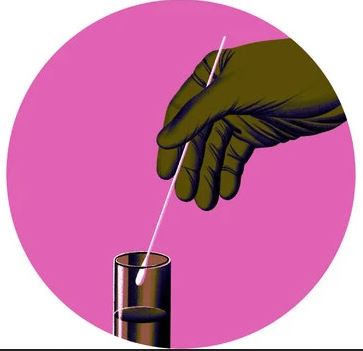
But months into the pandemic, many people still are frustrated and confused about virus testing. Long lines at testing sites, delays in getting results and even surprise testing bills have discouraged some people from getting tested. Many people don’t understand what a test can and can’t tell you about your risk — and wrongly think a test result that comes back negative guarantees they can’t spread the virus to others.
We asked some of the nation’s leading experts on testing to help answer common questions about how to get tested, what to expect and what the different tests and results really mean. Here’s their advice.
Common Questions About Testing:
- When should I be tested for coronavirus?
- What type of test should I get?
- What happens during a coronavirus test?
- What do the results mean for me?
- If I get tested, can I see my family for the holidays?
- Is home testing an option? Is it reliable?
- Should I get an antibody test?
- What’s next for testing?
- So what’s the bottom line?
When should I be tested for coronavirus?
Ideally, you should be able to get a coronavirus test whenever you want it. But in the United States, test availability varies around the country. In some places, you still need a doctor’s prescription to get tested. In other communities, you can get tested easily by walking in to a clinic or even using a home test kit. There are four main reasons to get a test.
Symptoms: Feeling sick is the most urgent reason to get tested. A dry cough, fatigue, headache, fever or loss of sense of smell are some of the common symptoms of Covid-19. (Use this symptom guide to learn more.) While you’re waiting for your results, stay isolated from others and alert the people you’ve spent time with over the last few days, so they can take precautions. Many tests are most reliable during the first week you have symptoms.
Exposure: Did you find out that you recently spent time with an infected person? Were you in a risky situation, like an indoor gathering, or a large event or in an airport and airplane? You should quarantine and get tested. If testing isn’t widely available and you have only one chance to take a test, it’s best to get tested five to six days after a potential exposure to give the virus the opportunity to build up to detectable levels in the body. Test too early, and you might get a false negative result. If you’re in a city where it’s easy to get a test, get tested a few days after the exposure and, if it’s negative, get tested again in three or four days. If you think you’ve been exposed to the virus, the Centers for Disease Control and Prevention advises you quarantine for at least seven days and receive a negative test result before returning to normal activity.
Precautions: Some people get tested as a safeguard. Hospitals may require you to be tested before certain invasive medical procedures or surgery. Visitors to nursing homes may be given a rapid test before they are allowed to enter. Many colleges and boarding schools test students frequently and suggest they be tested before leaving campus and when they return. If you must travel, it’s a good idea to be tested before you leave, and a few days after you arrive. A negative test result is never a free pass to mingle with others, but knowing your infection status will lower the chance that you are unknowingly spreading the virus. Check on the turnaround time at the testing site in your area, and try to time it so you get a result as close as possible to the event or visit. Even if your test result is negative, you still need to wear a mask, maintain distance from others and take other precautions.
Community testing: In some cases, local health officials will encourage widespread testing for everyone, offering tests at health clinics, pharmacies and drive-through testing sites. Testing lots of people helps measure the level of spread in an area and can help slow or stop the spread in areas where known infections have occurred. In New York City, for instance, a health department advertising campaign is encouraging people to be tested often, even if they feel fine. “We learned that one of the ways we can control this virus effectively is by making sure as many people as possible are tested at a given time, so we can pick up people who are infected but don’t yet know they have the infection,” said Dr. Jay K. Varma, deputy commissioner for disease control at the New York City Health Department.
What type of test should I get?
Virus tests are categorized based on what they look for: molecular tests, which look for the virus’s genetic material, and antigen tests that look for viral proteins. The various tests all use a sample collected from the nose, throat or mouth that may be sent away to a lab or processed within minutes. Testing should be free or paid for by your insurance, although some testing centers are adding extra charges. Here are the common tests and some of the pros and cons of each.
Laboratory molecular test: The most widely available test, and the one most people get, is the P.C.R., or polymerase chain reaction, test, a technique that looks for bits of the virus’s genetic material — similar to a detective looking for DNA at a crime scene.
Pros: This test is considered the gold standard of coronavirus testing because of its ability to detect even very small amounts of viral material. A positive result from a P.C.R. test almost certainly means you’re infected with the virus.
Cons: Because these tests have to go through a laboratory, the typical turnaround time is one to three days, though it can take 10 days or longer to get results, which can limit this test’s usefulness, since you may be spreading virus during the waiting period. Like all coronavirus tests, a P.C.R. test can return a false negative result during the first few days of infection because the virus hasn’t reached detectable levels. (One study showed that among people who underwent P.C.R. testing three days after symptoms began, 20 percent still showed a false negative.) Another frustration of P.C.R. testing is that it sometimes detects the virus’s leftover genetic material weeks after a person has recovered and is no longer contagious. The tests are also expensive.
Rapid antigen test: An antigen test hunts for pieces of coronavirus proteins. Some antigen tests work sort of like a pregnancy test — if virus antigens are detected in the sample, a line on a paper test strip turns dark.
Pros: Antigen tests are among the cheapest and speediest tests out there, and can deliver results in about 15 to 30 minutes. Some college campuses and nursing homes are using rapid tests to check people almost daily, catching many infectious people before they spread the virus. Antigen tests work best when given a few times over a week rather than just once. “It tells you, am I a risk to my family right now? Am I spreading the virus right now?” said Dr. Michael Mina, an epidemiologist at Harvard University’s School of Public Health and a proponent of widespread rapid testing. Though, he cautioned, “if the test is negative, it doesn’t tell you if you’re infectious tomorrow or if you were infectious last week.”
Cons: An antigen test is less likely than P.C.R. to find the virus early in the course of the infection. One worry is that a negative rapid test result will be seen as a free pass for reckless behavior — like not wearing a mask or attending an indoor gathering. (The White House Rose Garden event is a good example of how rapid testing can create a false sense of security.) A negative antigen test won’t tell you for sure that you don’t have the coronavirus — it only tells you that no antigens were detected, so you’re probably not highly infectious today. (In one study, a rapid antigen test missed 20 percent of coronavirus infections found by a slower, lab-based P.C.R. test.) Antigen tests also have a higher rate of false positive results, so a positive rapid test should be confirmed.
Rapid molecular test. Some tests combine the reliability of molecular testing with the speedy results of a rapid test. Abbott’s ID Now and the Cepheid Xpert Xpress rely on a portable device that can process a molecular test right in front of you in a matter of minutes.
Pros: These tests are speedy and highly sensitive, and they can identify those exposed to coronavirus about a day sooner in the course of an infection than a rapid antigen test. A rapid molecular test isn’t quite as accurate as the laboratory version, but you’ll get the result much faster.
Cons: Depending on where you live, rapid molecular tests might not be widely available. They are also less convenient and often slower than many antigen tests. And like all coronavirus tests, a negative result isn’t a guarantee you don’t have the virus, so you’ll still need to take precautions. Like its laboratory cousin, a rapid molecular test can detect leftover genetic material from the virus even after you’ve recovered.
What happens during a coronavirus test?
Some tests require a health care worker to collect a sample through the patient’s nose or mouth. Other tests allow patients to use a swab or spit to collect their own samples.
Nose swab: Many tests collect a sample via the nose. The most reliable sampling method uses a nasopharyngeal swab — a long, flexible stick with absorbent material on the end — that is inserted deep into your nasal cavity until it reaches the upper part of your throat. A trained health worker must perform nasopharyngeal swab tests. A more comfortable method inserts a swab about a half-inch into one nostril and twists and rubs the swab on the inside of your nose for about 15 seconds. Less invasive nose swabs like these can often be self-administered.
Mouth swab: In some cases, you may be asked to say “ahh” as the swab is used to collect a sample from the back of your throat, similar to a common test for strep throat. Another method gathers fluids from your mouth by swabbing the cheeks, gums or tongue.
Saliva sample: One collection method requires the patient to drool into a test tube. There are no swabs involved, and people taking the test can collect their own saliva, making the procedure safer for health workers who don’t have to get near someone who might be infected.
What happens next? For laboratory tests, the sample is packaged, usually in a chemical soup that keeps it from degrading, and shipped to a facility that can process it. For a rapid test, the sample can be processed immediately, and the results given in a matter of minutes.
What do the results mean for me?
A virus test can produce one of three results: positive (or virus detected), negative (or virus not detected) or inconclusive. Here’s what the results really mean.
Positive: A positive test result means you should continue to stay home and isolate, and alert people you spent time with over the past few days. If you feel sick, contact your primary care doctor for guidance, and monitor your symptoms at home, seeking medical attention when needed. The Centers for Disease Control and Prevention says that you still should wait at least 10 days after symptoms started, and go 24 hours without a fever, before ending isolation. For some people who are severely ill, this timeline might be longer.
Negative: If your test result is negative, it’s reassuring, but it’s not a free pass. You still need to wear a mask and restrict social contacts. False negatives happen and could mean that the virus just hasn’t reached detectable levels. (It’s similar to taking a pregnancy test too early: You’re still pregnant, but your body hasn’t created enough pregnancy hormones to be detected by the test.)
“A negative result is a snapshot in time,” said Paige Larkin, a clinical microbiologist at NorthShore University HealthSystem in Chicago, where she specializes in infectious disease diagnostics. “It’s telling you that, at that exact second you are tested, the virus was not detected. It does not mean you’re not infected.”
Inconclusive: Sometimes a test comes back inconclusive because the sample was inadequate or damaged, or a sample can get lost. You can get retested but, depending on how much time has passed, it might be easier to just finish 10 days of quarantine. If you are sick but receive a negative or inconclusive test, you should consult your health care provider.
If I get tested, can I see my family for the holidays?
Sorry, but a negative test does not mean you can safely visit another household or travel for the holiday to see friends and family. A lot can go wrong between the time you took the test and the moment you hug a family member. False negatives are common with coronavirus testing — whether it’s a laboratory P.C.R. test or a rapid antigen test — because it takes time for the virus to build up to detectable levels in your body. It’s also possible that you weren’t infected with the virus when you took the test, but you got infected while you were waiting for the results. And then consider the risk of catching the virus in an airport, on a plane or from a taxi driver or rental car agent — and you may end up bringing the virus home with you for the holidays.
“I don’t want somebody to have a negative test and think they can go visit grandma,” said Dr. Ashish Jha, dean of Brown University’s School of Public Health.
Despite these limits, if you feel you must travel, it’s a good idea to get tested. If you’re using rapid testing, try to take more than one test over the days leading up to your visit, including a test on the day you plan to see a vulnerable person. If you’re getting a laboratory test, check the turnaround time and try to schedule it as close as possible to your visit. While the test doesn’t guarantee you’re not infected, a negative result will lower the odds that you’ll be spreading the virus. And, of course, a positive test tells you that you should cancel your plans. A test “filters out those who are positive and definitely shouldn’t be there,” said Dr. Esther Choo, an emergency medicine physician and a professor at Oregon Health and Science University. “Testing negative basically changes nothing about behavior. It still means wear a mask, distance, avoid indoors if you can.”
Is home testing an option? Is it reliable?
Two types of home tests are currently available. Several companies offer customers the option of spitting in a test tube at home, and then shipping the sample to a laboratory for processing. Results are delivered electronically in a day or two.
In November, the Food and Drug Administration issued an emergency green light for the first completely at-home coronavirus test, made by Lucira. The Lucira test kit allows a person to swirl a swab in both nostrils, stir it into a vial, and use a battery-powered device to process the test and get a result in 30 minutes. The test kit requires a prescription and is not yet widely available. Several companies have rapid home tests in development but still need F.D.A. approval.
Some experts are concerned that widespread home testing is impractical. Even if a new generation of home tests is approved, they question whether people would use the tests correctly or as frequently as recommended, and whether they would isolate if they test positive. But home testing also has several prominent supporters, among them Dr. Anthony S. Fauci, the country’s top infectious disease expert. Dr. Fauci notes that home tests — from home pregnancy tests to home H.I.V. tests — have long prompted skepticism, and that when home H.I.V. test kits were first developed, many experts worried that people would become despondent if they got a positive result while home alone and act brashly. “That’s a standard pushback against home tests,” he said.
But Dr. Fauci and other proponents of home testing say that simple, cheap home kits could allow people to take daily tests before going to work in an office, grocery store or restaurant or before going to school (although it’s still not clear how well the tests work in children). Rapid testing at home a few days a week could potentially identify an infection even before a person develops symptoms.
“I have been pushing for that,” Dr. Fauci said. “I think home testing is the same as a pregnancy test and should be available to people. As long as there is some Covid around, then I think a home test would be useful.”
Should I get an antibody test?
This blood test is designed to detect antibodies that signal you were infected with coronavirus in the past, but shouldn’t be used to diagnose a current infection. It can take one to three weeks after infection for your body to begin producing antibodies. Blood is taken by pricking the finger or drawing blood from your arm through a needle. You can get the test through a doctor’s office, many urgent care clinics or a local public health clinic. You may be offered a free antibody test when you donate blood as well. The waiting time for results varies from a few days to two weeks.
Pros: An antibody test can tell you if you were infected with coronavirus in the past. But experts warn against assuming too much about what a positive result says about immunity to the virus. Scientists generally agree that the presence of antibodies most likely indicates some level of protection, but they don’t know to what extent or for how long. Although reinfections are thought to be rare, they have occurred, and experts stress that a positive result on an antibody test should not give someone a free pass to shirk masks or mingle with others.
Cons: Many antibody tests are inaccurate, some look for the wrong antibodies, and even the right antibodies can fade over time. Some tests are notorious for delivering false positives — indicating that people have antibodies when they do not. These tests may also produce false negative results, missing antibodies that are present at low levels. An antibody test should not be used by itself to determine whether a person is currently infected.
If you do decide to get an antibody test, the result should not change your behavior. You still need to take all public health precautions and assume that you can still contract or spread the virus. If you know you had the coronavirus, and it was confirmed by a diagnostic test at the time you were ill, you may be eligible to donate convalescent plasma, which can potentially help patients still suffering from Covid-19, who can get an infusion of your antibodies to accelerate their recovery time.
What’s next for testing?
More than 200 tests for the coronavirus have been given emergency green lights by the F.D.A., with many more likely to come. Experts think some of the next wave of tests will include more products that can be self-administered from start to finish at home.
As the nation speeds toward the winter months, combination flu/coronavirus tests, which can search for both types of viruses at the same time, are likely to become increasingly common. Many of these tests are already available in doctors’ offices and clinics.
Researchers are also exploring other types of tests that might be able to measure other aspects of the immune response to the virus.
So what’s the bottom line?
More testing is needed to stop the spread of the coronavirus. The more testing we do and the faster we get the results back — whether it’s a P.C.R. test or a rapid test — the more information we have to make good choices and keep those around us safe. Tests are useful when used correctly, and when you know the limits of the information they give you. A positive test of any kind should keep you home and isolating. (If you have good reason to doubt the result, get tested again.)
A negative test is not a free pass to drop your mask and socialize in groups. It’s a snapshot in time. A negative P.C.R. test tells you that you were negative a few days ago when you took the test. A negative rapid antigen test tells you that you’re probably not infectious right now, but it’s better to take a few more tests over the next few days to be sure. In both cases it’s possible you still have the virus (just as it’s possible to get a negative pregnancy test and still be pregnant).
In general, if you have symptoms, your doctor will order a P.C.R. test to confirm if you have Covid-19. If you’re living on a college campus, or going to work in a factory or grocery store every day, frequent rapid testing can be a useful way to monitor your health regularly. Because testing has not been consistently available around the country, you may not have the option for getting either type of test quickly. Wearing a mask, maintaining your distance and restricting contact with people outside your household remain essential to stopping the spread of the coronavirus.








Comments
подібної до вашої, я так
і не знайшов. А це досить цінно для мене.
На мій погляд Особисто на мій погляд, якщо всі веб-майстри та блогери будуть створювати хороший контент, як і ви,
інтернет буде набагато кориснішою, ніж будь-коли раніше.
who truly knows what they're talking about on the internet.
You definitely realize how to bring an issue to light and make it important.
A lot more people ought to look at this and understand this side of the story.
I was surprised you are not more popular since you surely
have the gift.